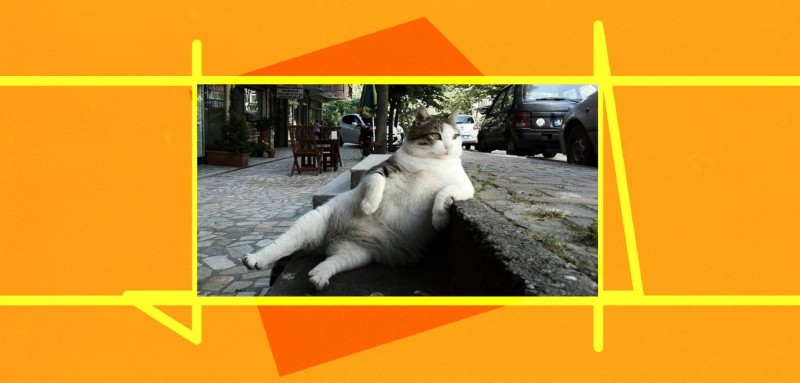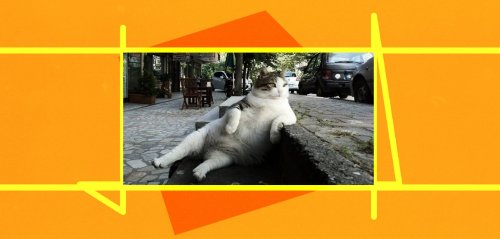When one thinks of Istanbul, the capital of great empires throughout history, with its magnificent historic buildings and palaces, cats often come to mind as well. These charming and playful creatures have been part of the city's identity since the days of the Ottoman Empire.
These lovable animals, which are often born and live their entire lives in the streets, can be found almost everywhere in Istanbul. Sometimes, they roam the city’s streets and gardens; other times, they relax inside boutiques and shops or peek out from behind the windows of homes. Occasionally, they sit patiently and gaze at restaurant diners, hoping for a bite of food. At times, they cozy up to people waiting for buses, sit on park benches, or rub up against shopkeepers seated outside their stores, simply seeking affection and a few pets.
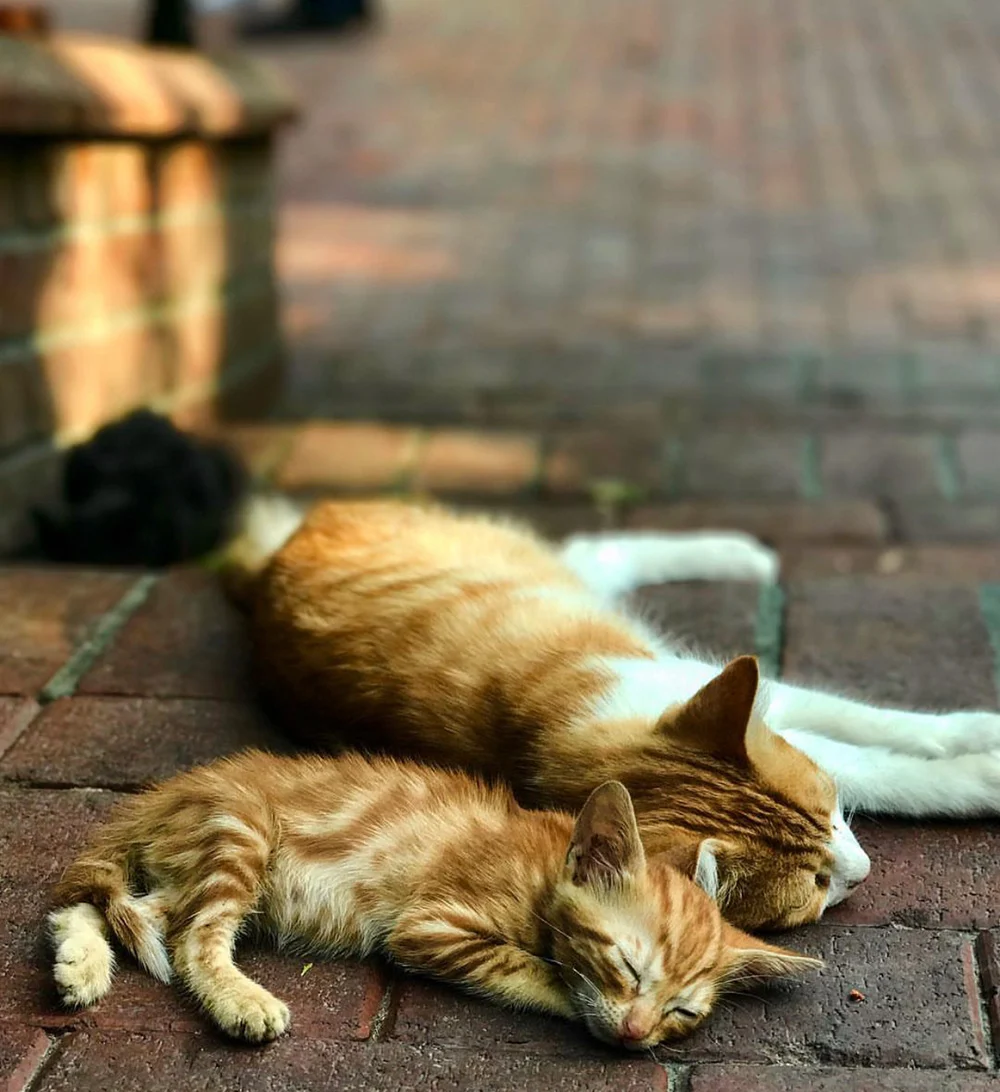 Istanbul cats
Istanbul cats
Cats sleep in Istanbul’s Maçka Park.
Istanbul’s cats are more than just small animals; they have distinct personalities and set their own rules. In many ways, these cats are intrinsically connected to the culture, authenticity, and complexity of Istanbul.
Sultans and cats
For a long time, it was believed that the domestication of cats began in ancient Egypt, where cats were revered and held in high regard. In fact, they were so significant that they were buried alongside pharaohs, with records dating back to around 3100 BC. However, this theory was challenged when new evidence surfaced indicating that cat domestication may have started earlier, in southern Cyprus. A grave from the Neolithic period, between 7500 and 7200 BC, was discovered on the island of Shillourokambos, containing a cat buried beside its owner.
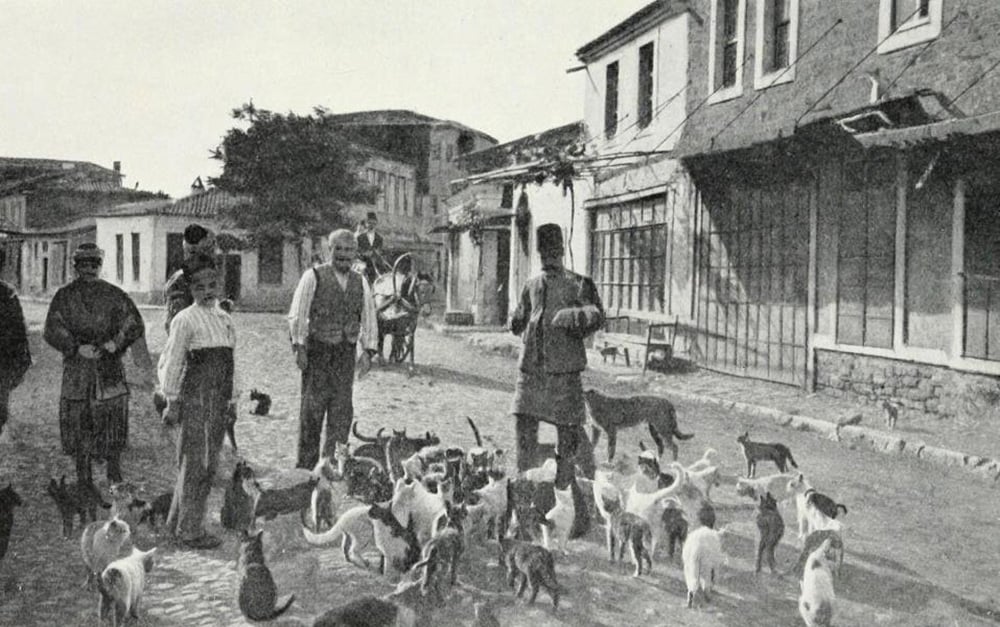 Istanbul cats
Istanbul cats
A group of men feed cats during the Ottoman period
In Mesopotamia, “the land between two rivers”, one of the regions where agriculture first flourished, cats played a significant role in controlling the rat population, preventing damage to crops. This marked the beginning of the bond between humans and cats in Anatolia. Initially kept as hunters, cats adapted to urban life during the Ottoman period and contributed to the culture of feline friendship that emerged in Istanbul.
The Ottoman Empire was heavily involved in fostering this relationship with cats and raising them in Istanbul, especially at a time when most of the city's buildings were made of wood, making them ideal breeding grounds for rats. This made the presence of cats essential for the city. Animals generally held great importance in Ottoman and Islamic culture, in which stray animals were protected, and people were encouraged to form friendly relationships with them.
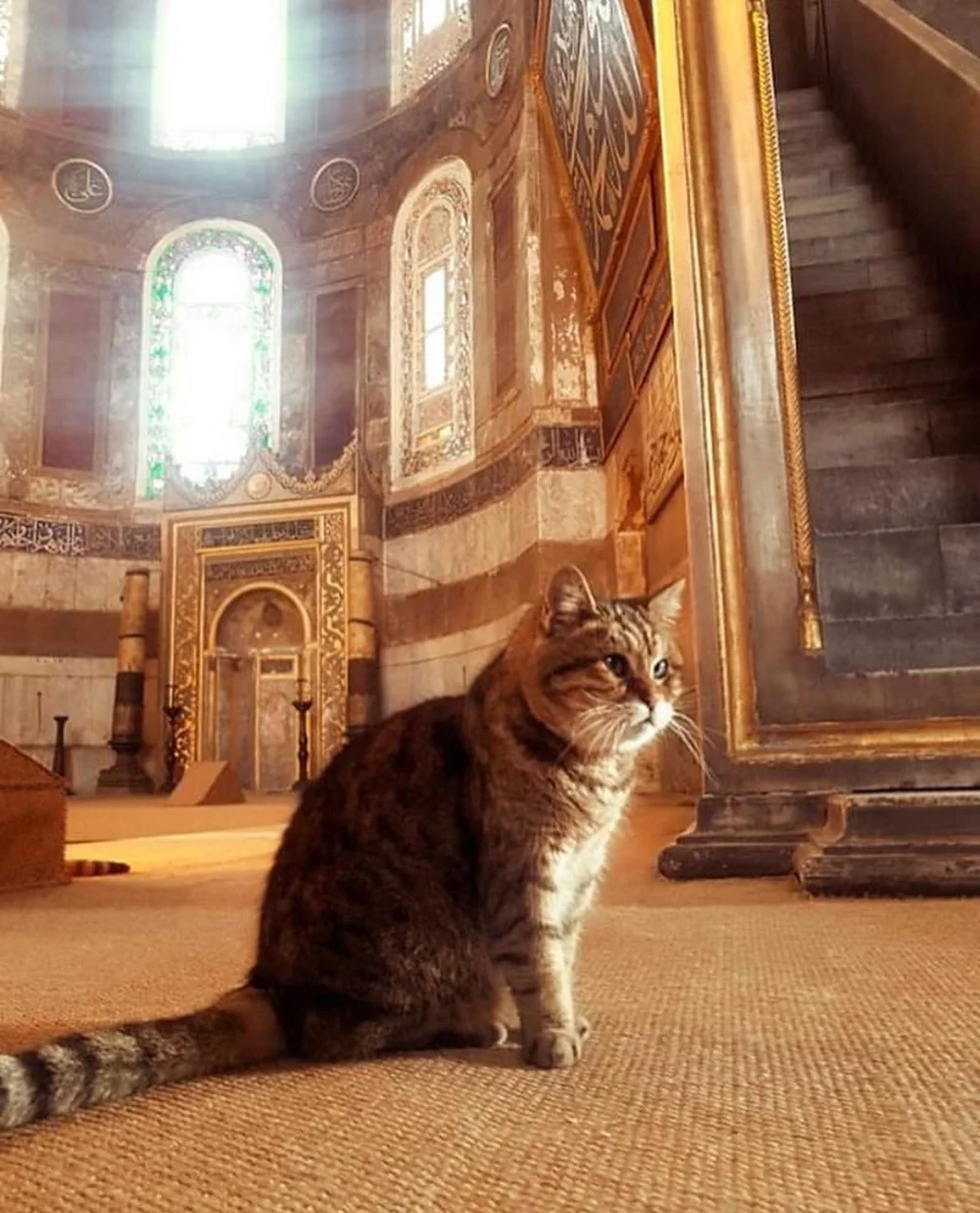 Istanbul cats
Istanbul cats
A cat inside a mosque in Istanbul
The Ottomans treated stray animals with care, ensuring that meals were provided for cats and dogs alongside the needy. Butchers were even contracted to feed street animals with leftover meat, for which they were compensated. The Ottomans didn’t stop there; they established institutions to treat animals and provide them with food and water—these institutions were considered the first animal hospitals. Destroying bird nests was considered a sin, and special attention was given to birds in architecture, with water troughs built into buildings specifically for them. In the capital and other cities of the vast empire, there were individuals called "manjashis" responsible for feeding stray animals.
Royal cats
The Ottoman sultans were as fascinated by cats as the common people, if not more so. In the biography of Sultan Abdul Hamid II, written by his daughter Ayşe (‘Aisha’), there are several mentions of the royal cat, “Agha Effendi.” Aisha wrote that her father’s bond with Agha Effendi, a white Angora cat, was so strong that even when he played dominoes with his daughter, the cat would sit contentedly in his lap.
Agha Efendi, The Cat of Sultan Abdulhamid II, 1900s
— Ottoman Imperial Archives (@OttomanArchive) November 11, 2018
Sultan Abdülhamid'in Kedisi Ağa Efendi, 1900'ler pic.twitter.com/AHluHhMU0U
Aisha wrote about this, saying, “Not only would Agha Effendi sit on his lap, but if he wanted, he could even lie down in the middle of our game, right on top of the dominoes, and no one had the right to protest.” It has been reported in various sources that Agha Effendi was so spoiled that he wouldn’t eat unless his food was served to him with a fork.
Another famous story about Istanbul and its cats is that of the city’s "Library of Cats" or "Beyazıt Library." It is said that the number of cats living in this library grew so much that over a hundred cats resided on each floor, and all of them were as famous as the books housed there.
Istanbul’s famous cats
Even today, Istanbul is considered one of the best cities in the world for cats. Maçka Park on the European side and Fenerbahçe Park on the Asian side are among the most famous places for stray cats. In these parks and the surrounding streets, you can see cats of all colors, ages, and breeds. Everywhere, there are bowls of water and food containers that are never empty, and there’s nothing more delightful than a small, curious kitten in Istanbul.
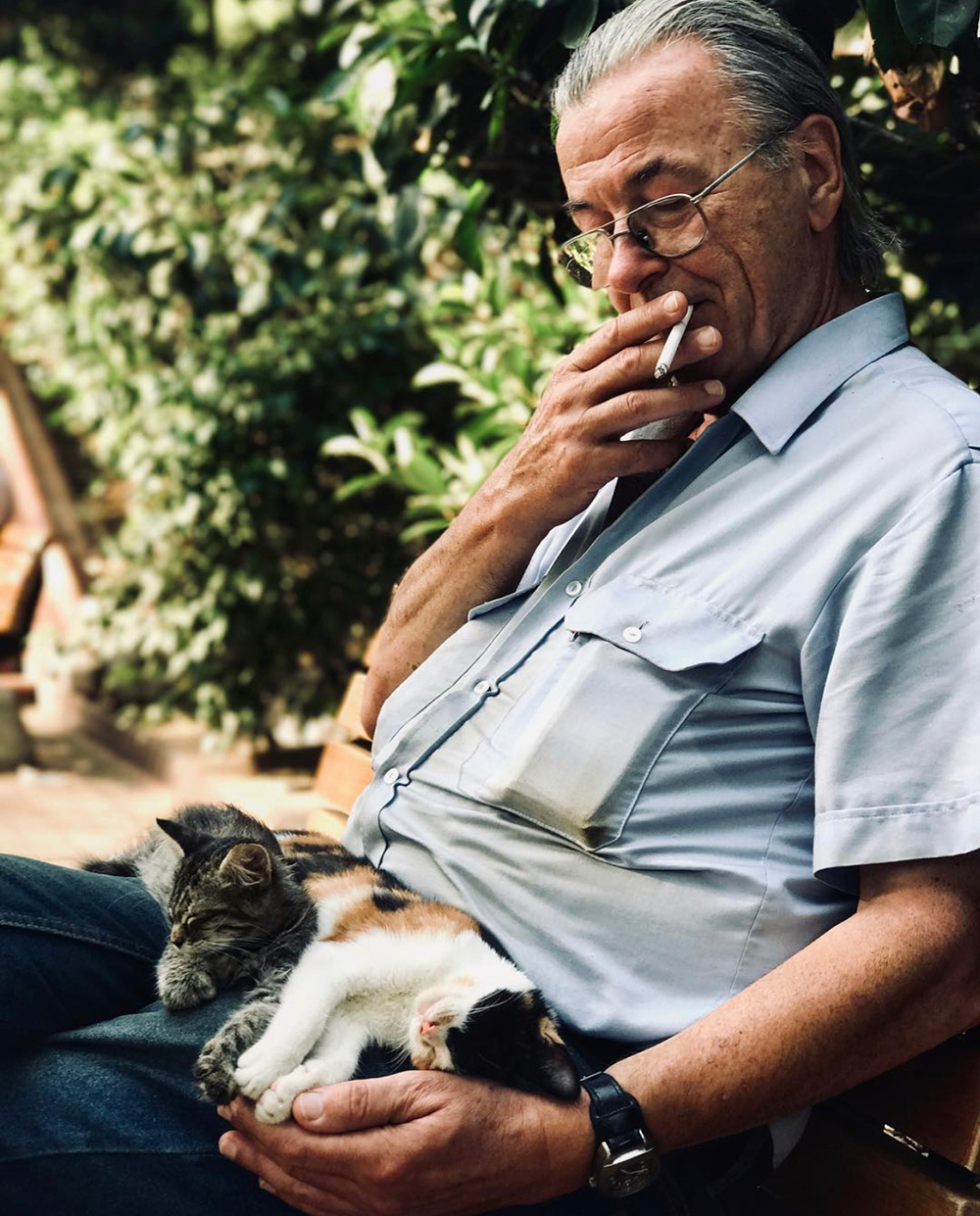 Istanbul cats
Istanbul cats
Cats cozying up to locals in Istanbul’s Maçka Park.
Among the many cats living in Istanbul, some have become famous. For example, Tombili, a well-known cat from the Kadıköy district, gained fame after a photo of him casually relining against steps in front of a kebab shop sign went viral. He appeared in hundreds of pictures taken around the neighborhood. After his death in 2016, a statue of him was erected in his iconic sitting pose in the spot he used to sit in.
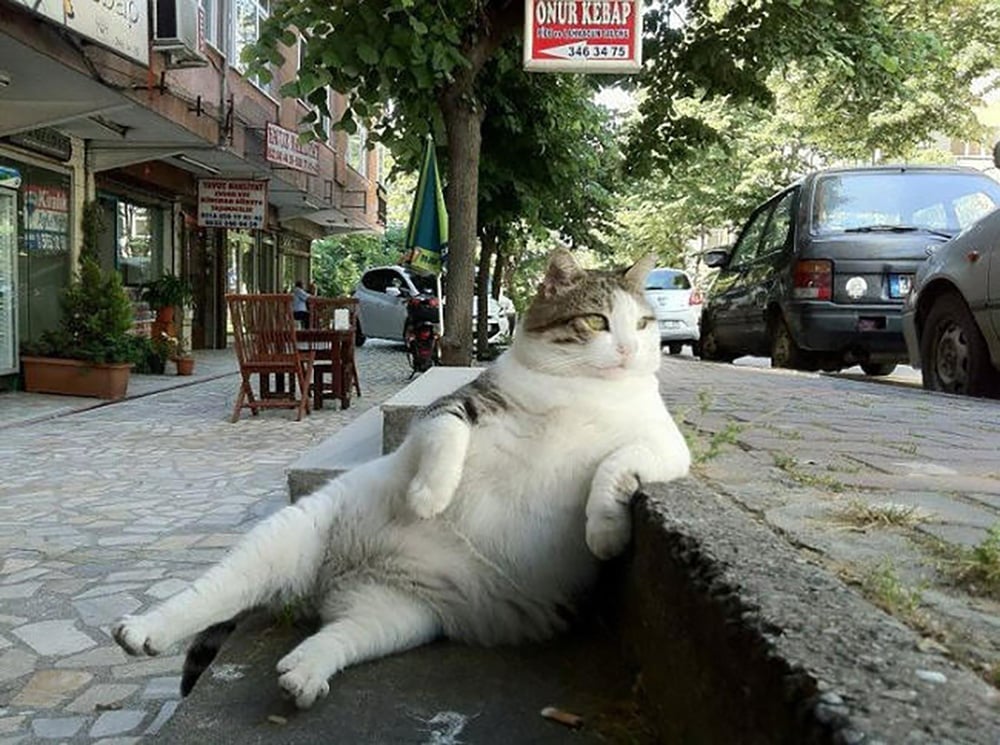 Istanbul cats
Istanbul cats
Tombili, the Istanbul street cat that became famous for his peculiar penchant for reclining against the steps of his neighborhood’s sidewalk.
But perhaps the most famous cat in Istanbul is "Gli," who has been the guardian of the well-renowned Hagia Sophia mosque since 2004. With 100,000 followers on Instagram, Gli appeared in thousands of photos taken from all corners of Hagia Sophia. Born in 2004, Gli, along with her sister Kizim and brother Pati, was raised in the security booth of Hagia Sophia. Originally named "Gri" (meaning "Gray"), her name eventually evolved into "Gli," influenced by the pronunciation of tourists visiting the mosque. Gli passed away in 2020.
Cats in Turkish literature
Cats have had a place in Turkish literature since the Ottoman era, frequently appearing in the poems and stories of prominent Turkish writers. Some authors used cats' appearances or behavioral traits to draw comparisons between characters, while others wrote directly about cats. Writers such as Peyami Safa, Orhan Veli, Hüseyin Rahmi Gürpınar, and Tomris Uyar all have important and well-known works that feature cats. For instance, Orhan Veli describes class differences in his poem "Tail Song" with the lines: "You and I, we can’t be together! / Our paths are different / You are a palace cat, and I’m an alley cat…"
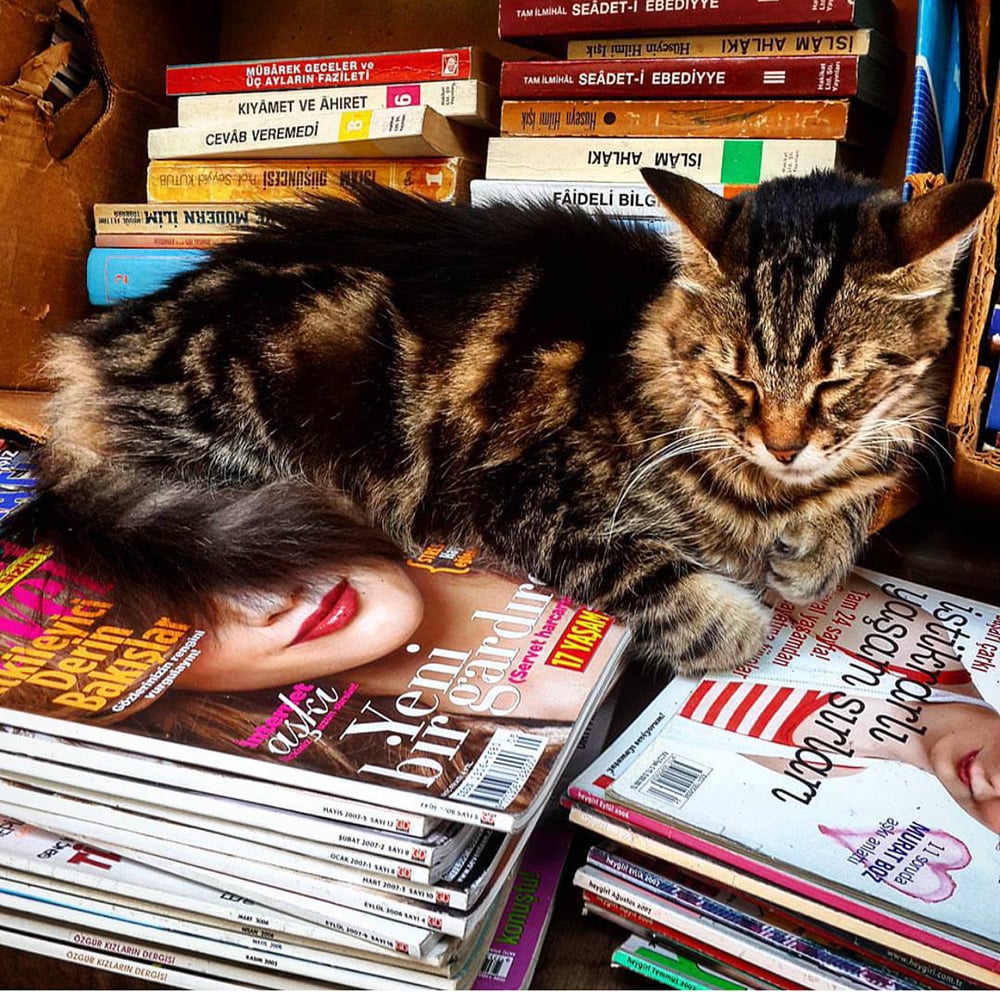 Istanbul cats
Istanbul cats
A cat curled up on magazines in an Istanbul shop
In his travelogues, Evliya Çelebi shares amusing stories about the cats he encountered during his journeys. In his novel Fatih Harbiye, Peyami Safa uses cats and dogs to highlight the contrast between Eastern and Western cultures. Hüseyin Rahmi Gürpınar, before his death, left a will with the following request: "Take care of my cat, and don’t let her go hungry." It is said that Gürpınar’s cat became a symbol of Istanbul’s Heybeliada Island.
Many books have been published featuring countless pictures of Istanbul’s cats. Documentaries and non-documentary films have been made about them, and even many animated characters have been inspired by these cats. One of the most famous of these is "Şero," short for "Şerafettin," the name of a real cat belonging to the famous Turkish cartoonist Bülent Üstün.
Laws and challenges
The residents of Istanbul share their city with more than one million stray cats. This figure only accounts for the street cats; if domestic cats were included, it's estimated that there are about two million cats in Istanbul. Given this immense number, many Turkish veterinarians have criticized people for feeding these cats various kinds of food, arguing that such feeding practices cause the animals to cluster in specific areas, making it easier for certain diseases to spread. Additionally, healthy cats coming into contact with communal food and water containers used by large groups of animals increase their risk of infection.
Until 2021, Turkish law classified animals, whether stray or domestic, as "objects" rather than "living beings." This classification had been criticized by animal rights advocates for years, as it led to lighter sentences for animal cruelty crimes committed by people.
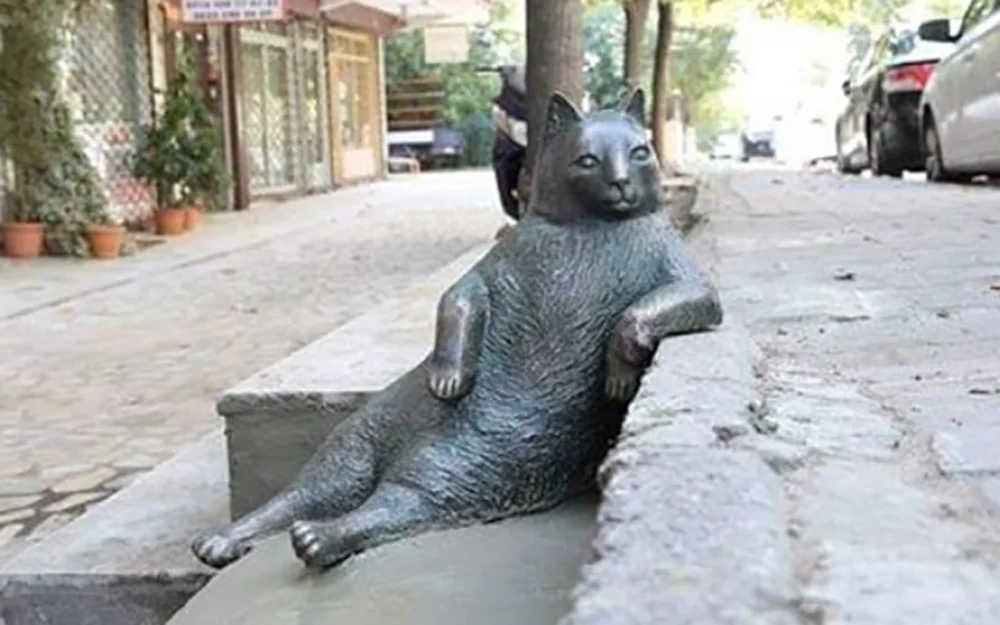 Istanbul cats
Istanbul cats
Kedi Tombili Heykeli, the statue of the famous Istanbul cat Tombili
For instance, in 2019, a Japanese citizen killed and ate five stray cats in the Küçükçekmece district of Istanbul, sparking outrage in both Turkey and Japan. The news caused a public outcry in Turkey, and the Japanese citizen was swiftly deported after the incident. Following this and similar cases, a law passed in 2021 recognized pets and strays as "living beings." Under this new law, crimes against animals could lead to prison sentences ranging from 6 months to 4 years. The law also mandated that all stray animals in Turkey be neutered.
Despite the love and care that most people in Istanbul show towards street animals, especially cats, the municipalities, supported by Turkish laws, occasionally try to control the number of stray animals or collect cats and dogs from Istanbul's streets. These efforts have led to numerous protests. What stirred recent controversy and anger on Turkish social media, however, was the news of legalizing the collection and killing of stray dogs in the streets of Istanbul.
Raseef22 is a not for profit entity. Our focus is on quality journalism. Every contribution to the NasRaseef membership goes directly towards journalism production. We stand independent, not accepting corporate sponsorships, sponsored content or political funding.
Support our mission to keep Raseef22 available to all readers by clicking here!
Interested in writing with us? Check our pitch process here!
